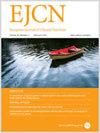Relative fat mass as an estimator of body fat percentage in Chilean adults
IF 3.6
3区 医学
Q2 NUTRITION & DIETETICS
引用次数: 0
Abstract
The Relative Fat Mass (RFM) is an alternative index to body mass index (BMI) for estimating whole body fat percentage (BF%). Our aims were to determine the accuracy of the RFM for 1) identifying individuals with elevated BF% and, 2) estimating the BF% compared to Dual-energy X-ray absorptiometry (DXA) in a Chilean adult population. Body composition was assessed by DXA in 270 healthy participants (125 women/145 men). Anthropometric measurements were assessed to calculate RFM and BMI. Receiver operating characteristic (ROC) curves were obtained to assess the sensitivity and specificity of both, RFM and BMI. Bland–Altman analysis between BF% measured by DXA vs. predicted BF% derived from RFM was performed to assess validity. Pearson´s correlation coefficients to analyze the association between BMI, RFM and DXA were also calculated. For RFM, the cut-off for elevated BF% was ≥22.7% for men and ≥32.4% for women and for BMI was ≥24.4 kg/m2 for men and ≥24.1 kg/m2 for women. The area under the ROC curve between RFM and BMI was not significantly different in men (0.970 vs. 0.959; p = 0.420) and women (0.946 vs. 0.942, p = 0.750). The Bland–Altman analysis showed that the estimation bias is more pronounced in men than in women. RFM is an accurate tool for identifying individuals with elevated BF%, although it was not as accurate as DXA for estimating the BF%. RFM may be an alternative method useful in primary care to select individuals for lifestyle counseling and in research to select patients for epidemiological studies.


用相对脂肪量估算智利成年人的体脂百分比。
背景/目的:相对脂肪量(RFM)是体重指数(BMI)的替代指标,用于估算全身脂肪率(BF%)。我们的目的是确定 RFM 在以下方面的准确性:1)识别 BF% 升高的个体;2)与智利成年人群中的双能 X 射线吸收测量法(DXA)相比,估计 BF% 的准确性:通过 DXA 对 270 名健康参与者(125 名女性/145 名男性)的身体成分进行评估。对人体测量数据进行评估,以计算 RFM 和 BMI。通过接收者操作特征曲线(ROC)评估 RFM 和 BMI 的灵敏度和特异性。为评估有效性,对 DXA 测量的 BF% 与 RFM 预测的 BF% 进行了 Bland-Altman 分析。还计算了皮尔逊相关系数,以分析 BMI、RFM 和 DXA 之间的关联:对于 RFM,男性 BF% 升高的临界值为≥22.7%,女性为≥32.4%;对于 BMI,男性为≥24.4 kg/m2,女性为≥24.1 kg/m2。男性(0.970 vs. 0.959; p = 0.420)和女性(0.946 vs. 0.942, p = 0.750)RFM 与 BMI 之间的 ROC 曲线下面积无显著差异。布兰德-阿尔特曼分析表明,男性的估计偏差比女性更明显:RFM是一种准确的工具,可用于识别BF%升高的个体,但其估计BF%的准确性不如DXA。RFM可能是一种替代方法,在初级保健中用于选择接受生活方式咨询的个体,在研究中用于选择接受流行病学研究的患者。
本文章由计算机程序翻译,如有差异,请以英文原文为准。
求助全文
约1分钟内获得全文
求助全文
来源期刊
CiteScore
10.60
自引率
2.10%
发文量
189
审稿时长
3-6 weeks
期刊介绍:
The European Journal of Clinical Nutrition (EJCN) is an international, peer-reviewed journal covering all aspects of human and clinical nutrition. The journal welcomes original research, reviews, case reports and brief communications based on clinical, metabolic and epidemiological studies that describe methodologies, mechanisms, associations and benefits of nutritional interventions for clinical disease and health promotion.
Topics of interest include but are not limited to:
Nutrition and Health (including climate and ecological aspects)
Metabolism & Metabolomics
Genomics and personalized strategies in nutrition
Nutrition during the early life cycle
Health issues and nutrition in the elderly
Phenotyping in clinical nutrition
Nutrition in acute and chronic diseases
The double burden of ''malnutrition'': Under-nutrition and Obesity
Prevention of Non Communicable Diseases (NCD)

 求助内容:
求助内容: 应助结果提醒方式:
应助结果提醒方式:


